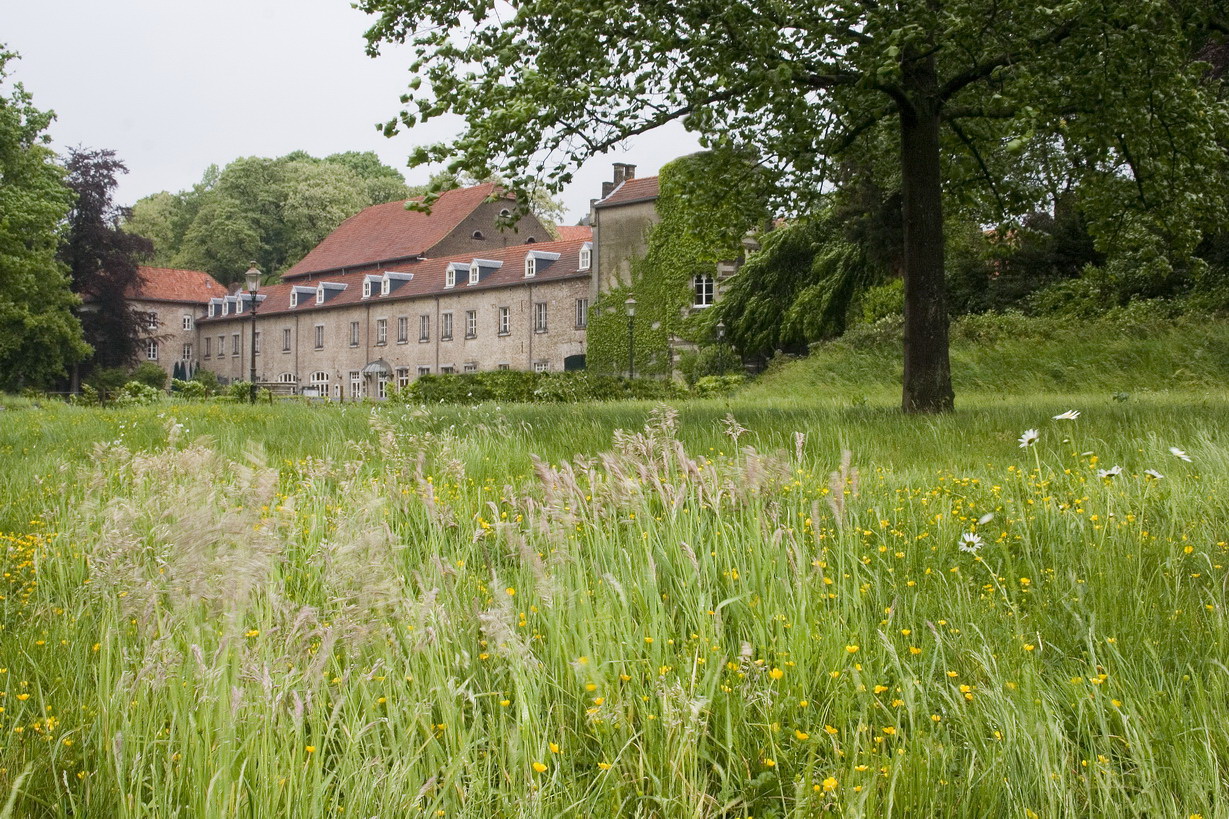

Count Gelou had today’s castle park created in landscape style during the first half of the 19th century. The park consists of mixed deciduous woodland with springs, natural waterfalls and ponds. The count changed the castle garden, the “hoff vant s’Heeren Huys”, into a French garden in accordance with the fashion of the period. Combined with the landscape park, this gave rise to a park in what was known as “mixed style”.
In 1959, the last heir gave the castle to the municipality of Elsloo for a symbolic price. The municipality transferred the garden to the institute of environmental education (Instituut voor Natuurbeschermingseducatie – IVN), which created a teaching and herb garden here.
The range of plants consists of kitchen herbs, medicinal herbs and rare wild plants, and the garden curators exchange approx. 2000 different types of seed with other garden lovers from all over the world. As a result, the emphasis has now shifted from a role as a teaching herb garden to that of a botanical garden which is home to plant families from all global regions. One example of a compilation of this kind is the fern collection, but solitary exotic trees such as the dove tree (Davidia involucrata) and bladder-nut tree can also be admired at Elsloo as can notable dogwoods such as Conus florida and Conus nuttallii.
There is also a monastery garden with herbs and pruned box at the castle. The landscape park adjacent to the garden is likewise open to the public. Ramson, wood anemones, lesser celandine, Corydalis and arums flower here in spring.